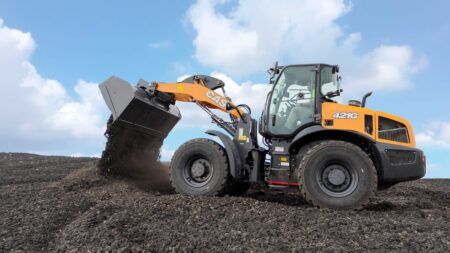Liebherr has announced it will unveil its new LRT 1090-2.1 and LRT 1100-2.1 rough-terrain cranes at Conexpo in Las Vegas, Nevada, in March 2017, which will fit in the 90-tonne and 100-tonne classes.
The development of the new generation of Liebherr rough-terrain cranes was preceded by extensive market surveys and analyses into the requirements for modern RT cranes, particularly in the main market of North America. In addition to the capacity of the cranes, their safety, particularly that resulting from ease of operation, was one of the main focal points for the development of the new cranes. Indeed, the two newly developed LRT crane models will be launched as the first mobile cranes that meet global safety standards and comply with all global regulations such as the US standard ANSI B30.5, the European EN 13000, Australian Standards (AS) and the Russian GOST standard.
The two newly designed LRT cranes are based on the same basic technical concept. The crane chassis and turntable are almost identical. The differences relate to the boom length, telescoping technology, ballast weight and lifting capacity.
High safety levels in every respect were the main priority for the design of the new Liebherr LRT cranes. Both new crane models feature an outrigger monitoring system as standard. The support status, on tires or outriggers, is detected automatically and saved to the crane controller. The attachment of the ballast to the turntable and the installation of the optional double folding jib including its angle adjustment are also recorded and monitored.
The VarioBase variable support base developed by Liebherr as standard on the new LRT cranes makes an important contribution to enhancing safety. VarioBase allows each individual outrigger beam to be extended to arbitrary lengths. The crane work is controlled by the load moment limiter within the LICCON controller, which calculates the maximum load capacities precisely for the current situation. This prevents accidents by human error during the assembly process and when hoisting loads. VarioBase also provides greater flexibility on-site. As a result of the increased lifting capacities when hoisting over the supports, the crane can hoist loads normally reserved for the next higher crane class.
Safety is also enhanced by providing greater comfort for the crane operator. For example, the crane cabin is 220mm (8.5in) wider than other standard cabins on the market. It can be tilted backward to provide greater comfort when hoisting loads to great heights. Clear, self-explanatory controls make the crane easy to handle, and enable the crane operator to concentrate on the main focus of their job, working with the crane and the load. A cooler and USB charging socket are standard features in the cabin.
Both crane models are powered by a Cummins diesel engine which meets all current emissions regulations. The engine develops 194kW (264bhp) and supplies a maximum torque of 990Nm (730lb-ft). A 6-speed powershift transmission from Dana and large 29.5 R25 tires guarantee the required off-road capability for the cranes. Their maximum speed is 25km/h (15mph), and all-wheel and crab steering ensure easy handling and high maneuverability in constricted conditions.
October 28, 2016




